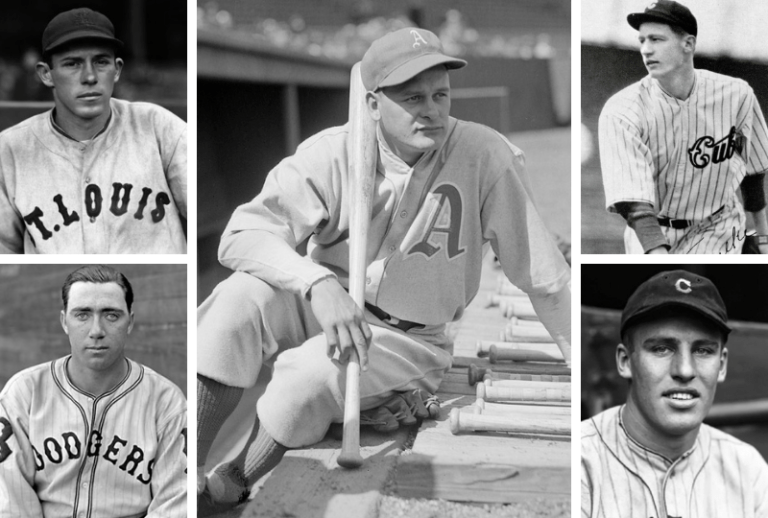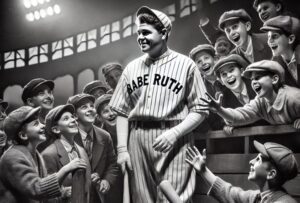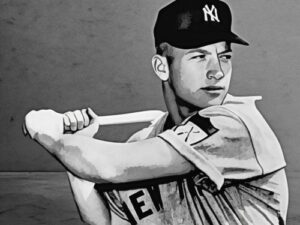Many consider the 1950s to be the Golden Era of baseball, but the 1930s shouldn’t be overlooked. The 1930s were a marvelous transitional era where stars of the past were blending with stars of the future during a challenging time in American history.
The decade started with Babe Ruth and Rogers Hornsby still in uniform; Lou Gehrig and Lefty Grove made their mark during the ’30s, still in their primes; and Joe DiMaggio and Ted Williams were on their way in as superstars. Even though most Americans were struggling to make ends meet during the Great Depression, baseball remained wildly popular.
Today, more than 70 years later, the names of Ruth and DiMaggio and Williams are still familiar to baseball fans. But there are stars from the 1930s whose names have been lost with the passage of time. Here are seven very good players you may have never heard of who starred in the 1930s.
Hal Trosky
Starting in his rookie season of 1934, Trosky proved to be a great-hitting first baseman who drove in gobs of runs. Unfortunately he was in the same league as Lou Gehrig, Jimmie Foxx, and Hank Greenberg, three of the best first sackers of all-time. Trosky rarely led the league in any category, not surprisingly, but he did top the loop in RBI with 162 in 1936. He was a left-handed slugger who hit as many as 42 homers for the Indians. he had over 200 homers and a career batting average well over .300 when he enlisted in World War II. When he came back, he wasn’t a good ballplayer anymore. But for a stretch of seven seasons from 1933-40 he averaged 120 RBI and hit as high as .343. He was a very good ballplayer.
Tony Cuccinello
The man they called “Cooch” was an odd-looking ballplayer but he got the job done. Playing mostly for the Brooklyn Dodgers and Boston Braves, Cuccinello toiled in virtual obscurity, but he was one of the most productive second basemen in the NL in the 30s. He hit for a low average but he was very good at drawing walks, and he was usually among leaders for his position in the power numbers too, hitting about 10-12 homers a season. He played 15 years in the big leagues, hitting .280 with more than 1,700 hits.
Lyn Lary
He was talented enough that he led the American League in stolen bases one year and drove in 100 runs another. He was also one of the better defensive shortstops in baseball during the Depression years, prized for his defensive range. Lary came up as part of the great Yankee teams of the late 1920s and early 1930s, winning a title in 1932. Later he played for four other American League teams and two in the National League. He was an effective leadoff batter, averaging nearly 90 walks per season.
Harlond Clift
Like others on this list, Clift played for losing teams and was overlooked in his own time. In an era when the biggest stars made headlines for hitting .330, Clift hit just .272 for his career. But the third baseman did everything that went mostly unnoticed: he walked (a lot, leading the AL once and topping 100 free passes six times); he was a fine fielder, probably the best at the hot corner in the decade; he hit for power on teams that didn’t hit for much power. In 1938 Clift clubbed 34 homers and drove in 118 runs for the second straight season. He scored more than 100 runs seven times for the lowly St. Louis Browns. When he retired he had hit more home runs than any other third baseman in baseball history. Clift is one of the greatest players to ever wear a Browns uniform.
Bob Johnson
Johnson had a powerful throwing arm, maybe the best prior to World War II. “Indian Bob” could also hit the baseball: he batted .300 five times in his short 13-year career. But his best asset was his extra-base power: he averaged 35 doubles, eight triples, and 24 homers per season while also drawing 90+ walks. Johnson just missed out on being part of the great A’s teams of the 1930s, but instead he played under Connie Mack when the old man was fielding a mediocre club. At the time he hung up his spikes, Johnson’s 288 homers were in the top ten for right-handed hitters all-time.
Lon Warneke
For a stretch in the 1930s, Warneke was one of the best pitchers in the National League. A control specialist dubbed the “Arkansas Hummingbird”, Warneke led the league with 22 wins and a 2.37 ERA in 1932 for the Chicago Cubs, helping the team to the World Series. He averaged 20 wins for the years 1932-35, using his masterful curve ball to frustrate batters. He rarely walked anyone (about two per game) and he won more than 61% of his decisions. Seven times the baseball writers thought enough of Warneke to give him MVP votes.
Van Lingle Mungo
Of all the great strikeout pitchers in baseball history, Mungo has the most melodic name, but is probably mentioned the least. The tall righthander had a brief, meteoric career, but he was very tough on enemy batters in his prime. From the age of 21 through 25, Mungo pitched at last 200 innings every season for the Dodgers while ranking among the NL leaders in K’s each year. He whiffed a league-best 238 in 1925 when he won 18 games for the seventh-place Dodgers, leading the league with 37 starts. He was famous for his wildness on the mound and also his red-hot temper. “Mungo and I get along fine,” his manager Casey Stengel said. “I just tell him I won’t stand for no nonsense, and then I duck.”






